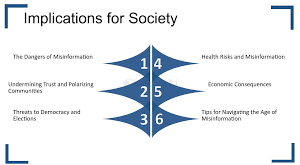Nuclear Generation: Evolution and Impact
Nuclear technology is a field defined by exceptional capability and deep challenges: with it, the modern world has been shaped in ways that are both transformative and contentious. From electricity production to treatment and industry applications,
nuclear energy stands as a paradox of benefits and risks that continues to shape international discourse. In this chapter, the history, applications, and implications of nuclear energy will be discussed, reflecting on its past successes and future potential.
Genesis of Atomic Age
The history of atomic power generation dates back from the discovery of radioactivity in the late 19th century. Henri Becquerel’s discovery of rays emitted by uranium and subsequent researches of Marie and Pierre Curie on radioactive elements paved the way toward mastering atomic energy.
The real breakthrough, however was made in 1938 when Otto Hahn and Fritz Strassmann discovered nuclear fission. This is the process that splits a nucleus of an atom into smaller pieces and emits an enormous amount of energy. It was fast in the discovery of the ability of fission and, through its discovery, nuclear reactors and weapons were developed.
Background of the World War II placed a strong force on the Manhattan Project-an allied project that aimed to prove the tremendous capabilities of nuclear reactions. The test went successful in the challenge but marked the end of the struggle while introducing a new period in energy production and geopolitical strategy.
Nuclear Power: A Two-Edged Sword
Nuclear power generation came forth into the scene as a promising way to the power needs of the arena, especially when fossil gas resources dwindled and concerns about climate change grew. Nuclear reactors provide heat through the managed nuclear fission reaction that is then turned into electrical power.
The benefit of nuclear power is it can generate large amounts of electricity with virtually low greenhouse gas emissions compared to a coal or natural gas plant.
The Seventies saw the rise of nuclear electricity, largely due to the oil crises and the growing electricity demands. Despite this, the industry faced humongous challenges. The Three Mile Island accident occurred in 1979, followed by the Chernobyl catastrophe in 1986, and the Fukushima Daiichi disaster in 2011 and brought to the fore the peril of such catastrophic failures.
The activities no longer only highlighted the issue of safety and environment but also further emphasized public mistrust and resistance.
Despite these challenges, nuclear power continues to feature in the energy mix of most countries. new reactor generation, which includes era IV reactors and SMRs, address protection concerns but provide a better performance.
For now, the ultimate frontier of nuclear research appears to be the fusion reactor that might, one day, offer a cleaner and more abundant source of electrical energy, but that is still a long-term goal, at best, for practical and economic feasibility.
Nuclear medication: recovery and diagnosis
Over and above the manufacturing of energy, nuclear age has impacted treatment thoroughly. Nuclear medicine involves the use of radioactive isotopes to diagnose as well as treat patients, taking advantage of the property of radioactive substances to be used in targeting the exact tissues or organs.
One of the most widely used applications of one of the above involves pets, and this is diagnostic imaging, which provides special images of metabolic activity in the body. Useful in oncology, puppies help in the detection of cancer, in follow-up regarding development of treatment,
and in assessing the adequacy of some treatments. Besides, SPECT has application in coronary heart conditions, brain disorders, and problems of the bone.
Radiotherapy, another equally important application of nuclear generation in medicine, is the use of high-energy radiation to destroy most cancers cells or reduce tumors. Techniques such as external beam radiotherapy and brachytherapy provide localized radiation to tumors while minimizing damage to surrounding healthy tissues.
With the area of radiopharmaceuticals, or medicine in the type of tablets containing radioactive isotopes, the scope of nuclear medication has been further increased. these compounds are so designed as to target specific illnesses or situations, supplying each diagnostic and therapeutic advantages.
For instance, using radioactive iodine to treat thyroid cancer is a nicely-mounted exercise that illustrates the effectiveness of nuclear technology in dealing with sickness.
Nuclear era in industry and research
The nuclear era extends beyond energy and medicine drugs to a myriad of business and studies programs. Industry uses radioactive isotopes in negative checking out, which involves weld inspections and detection of flaws in materials.
This is an important field in aerospace, manufacturing, and other production industries where structural integrity is essential.
Nuclear generation also plays an important role in the research of medicine. Particle accelerators speed charge debris to really high velocities using electromagnetic fields and rely on theories in nuclear physics to answer very important questions related to the universe.
Such centers have led to great discoveries, such as the discovery of the Higgs boson, and continue to advance our understanding of particle physics.
In addition, nuclear techniques are used in environmental monitoring and archaeology. For example, the radiocarbon relationship takes advantage of the decay of carbon-14 to establish the age of such ancient artifacts and fossils.
In addition, nuclear techniques are applied for monitoring environmental pollution and studying the impact of radiation on ecosystems.
The Moral and Environmental Dimensions
Ethical and environmental issues temper nuclear generation. The control of nuclear waste is still a huge venture. Radioactive waste remains hazardous for thousands of years and therefore requires good garage and disposal solutions to ensure safety to both the environment and human health.
There is some other serious question that the nuclear proliferation poses: it is the very multi-purpose nature of nuclear production—its ability to be used for either power and armament-that raises security concerns to the world community at large.
International treaties, such as the Nuclear Non-Proliferation Treaty, strive to reduce the proliferation of nuclear weapons while at the same time urging peaceful applications of nuclear technology, but their enforcement and compliance remain big issues.
There are a number of factors that throw historic activities, safety concerns, and environmental influences into public understanding and force nuclear technology to look for support in openness, education, and strict standards of safety as the best path toward public trust and responsible application.
The Future of Nuclear Era
It is only by laying down its challenges and exploiting its potential well that the future of nuclear age would be secured. studies into safer reactor designs, fuel cycles, and waste management solutions play a crucial role in sustaining nuclear energy.
Research into nuclear fusion is still an experimental stage; however, it holds promise to nearly limitless and clean power.
In medicines, new radiopharmaceuticals and techniques of imaging will continue to enhance diagnostic and therapeutic abilities with new expectations for patients suffering from different conditions. Fusion of nuclear generation with larger clinical investigations and business approaches will fuel innovation and economic development.
As we move into the vagaries of the nuclear age it is far more crucial that its benefits be balanced against astute attention to its risks. A search for energy safety; medical progress, and scientific discovery must be spearheaded with the impetus of commitment for protection, ethics, and environmental stewardship.
In the final analysis, nuclear science is a potent and multifaceted field with some milestone-reaching connotations. Its development from the early twentieth century till the present displays both its revolutionary impact and the continued need for responsible stewardship.
As we look forward, the challenge is how to capitalize on its benefits to further minimize the risks so nuclear power remains a human-friendly secure source of energy.


